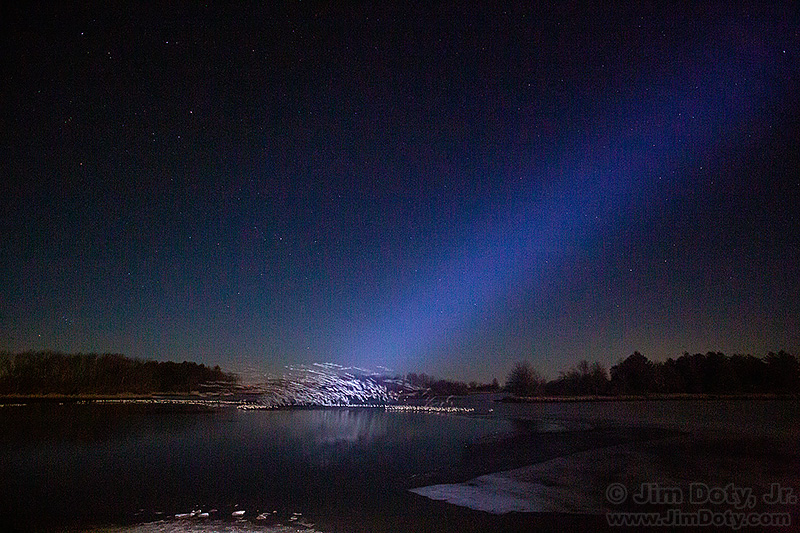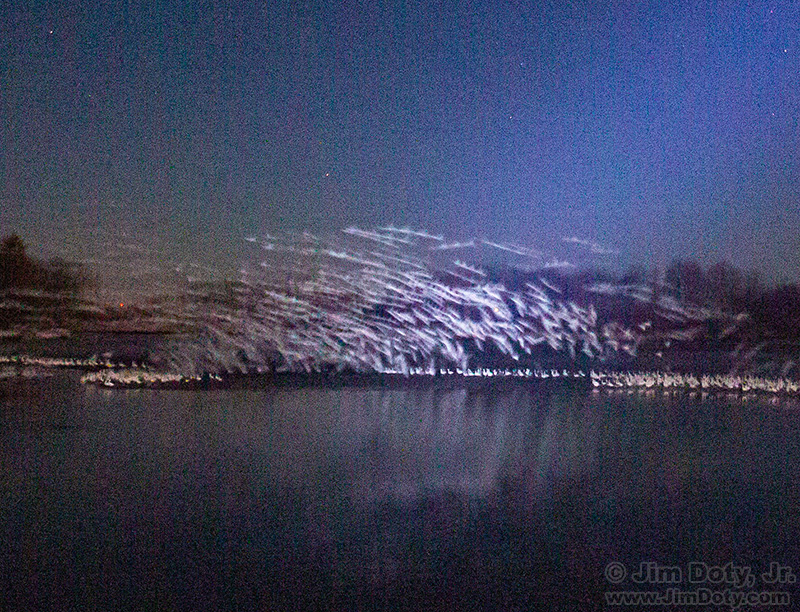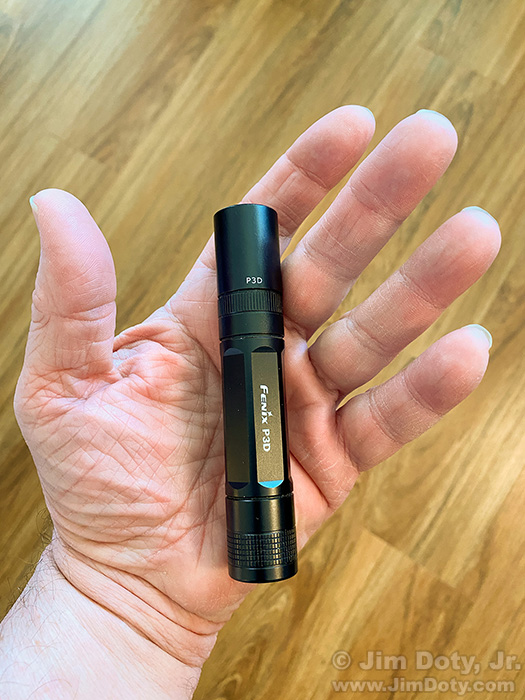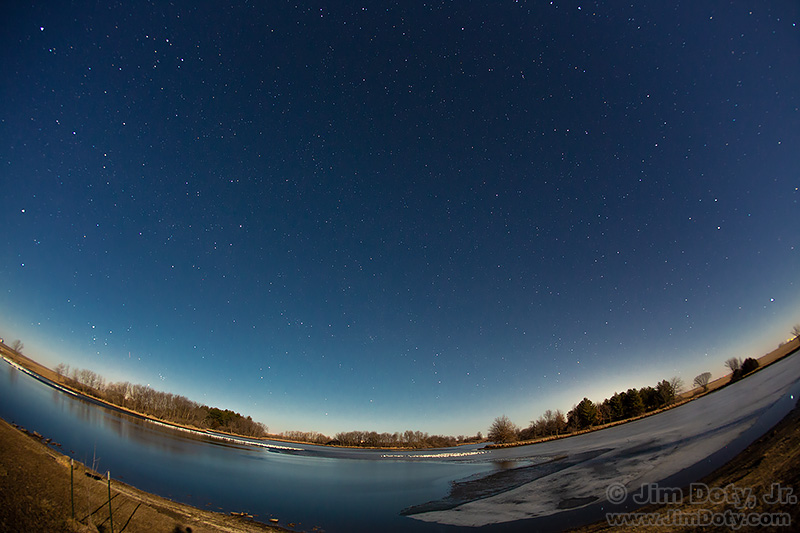Shorty after midnight I drove out to a nearby lake to photograph stars over the lake. I chose going out after midnight because the moon would be high enough in the sky to light up the remaining ice on the lake.
When I arrived at the lake my headlights revealed Snow Geese on the lake. I changed my plan. I set up my tripod and camera and a 17-40mm lens at 17mm. I set the ISO at 25,600 and the lens aperture at f/4.5. I took out a small but powerful pocket flashlight, held it high overhead and to the right of the camera and pointed it at the geese on the lake. You can see the beam of the flashlight in this photo. As I pushed down on the shutter button some of the geese took off.
This image is cropped from the image at the top of this article. I was intrigued that I could see the individual wing beats of many of the geese. During the 0.8 second exposure some of the geese had 4 wing beats, which means as these geese took of their wings were beating at 10 beats per second. You can also see the digital noise from using such a high ISO setting.
The tiny flashlight I was using was a Fenix model P3D. For such a small flashlight it puts out a lot of light. This flashlight has about the same brightness as your typical low beam headlights. This P3D has been discontinued. I have acquired a Fenix PD35 TAC flashlight and the P3D is now my backup.
I put a 15mm semi-fisheye lens on my camera to go back to my original plan of photographing stars over a moonlit lake. Thanks to the optical design of semi-fisheye lenses, straight lines that do not go through the center of the frame end up being bowed, hence the curved horizon. As primarily a landscape photo, rather than a wildlife photo, I could use a faster ISO and a slower shutter speed. In addition to the stars over the lake you can see three large gaggles of over 600 Snow Geese. The lens aperture was f/4.5, shutter speed of 30 seconds, and an ISO of 1600.
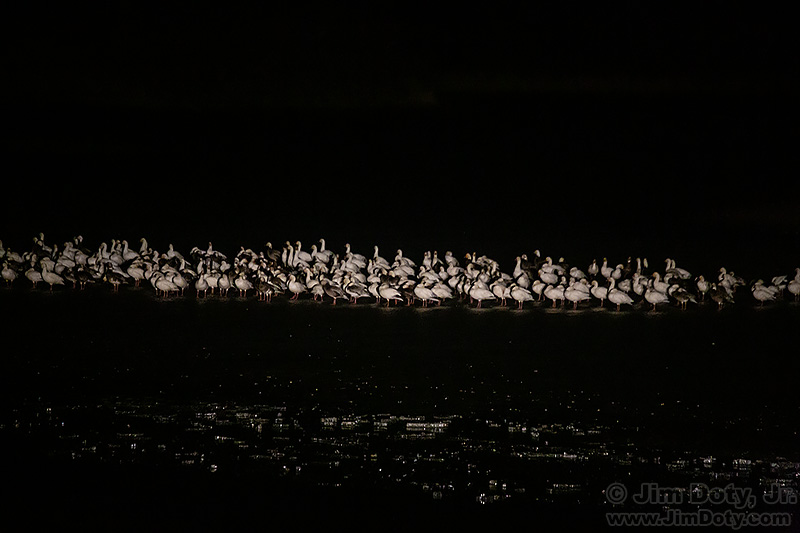
I wanted a closer look at the geese so I put on a 70-300mm zoom lens. I pointed the headlights of my car at the geese. In addition to the Snow Geese there are a few, gray Greater White-fronted Geese. I needed a faster shutter speed so I upped the ISO. The settings were f/6.3, 1/10 second, and ISO 3200.
I ended up with three very different kinds of images.
The day before I took this image there were over 200 of Greater White-fronted Geese on the lake, but no Snow Geese. When I took these night photos, most of the Greater White-fronted Geese had already left the lake. Eight hours after I took these photos I was back at the lake after the sun came up. There was only one Snow Goose on the lake and it flew away while I was watching. It was a short stop-over for the Snow Geese. The Greater White-fronted Geese were only around for two days.
Links

